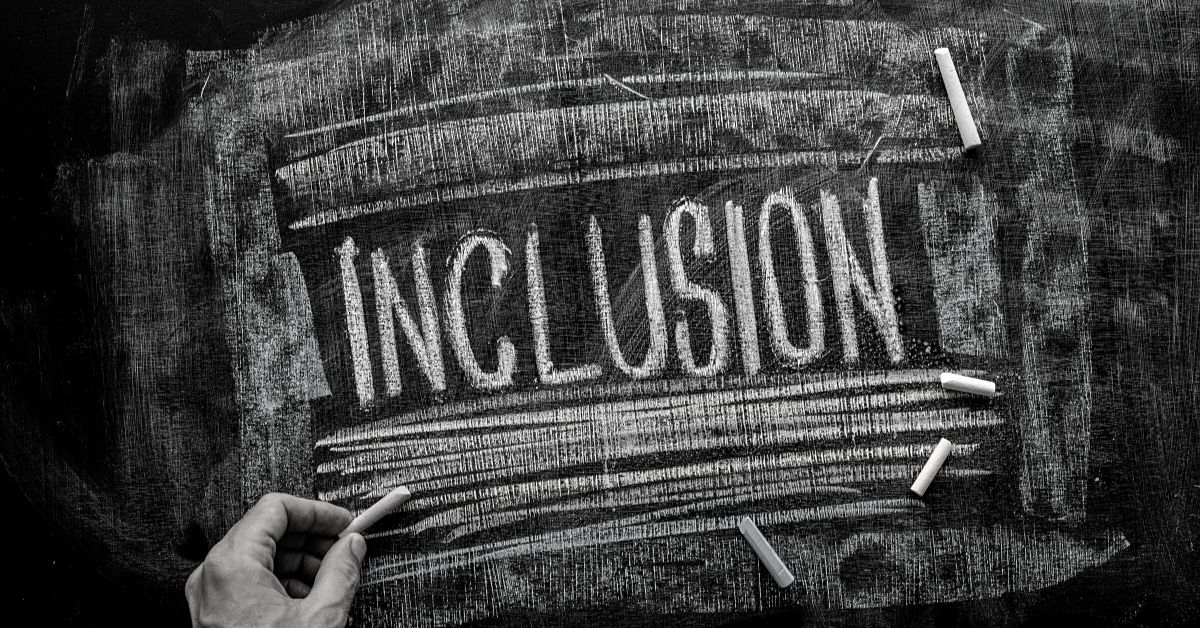
Have you ever heard the saying, ‘sticks and stones may break my bones, but words can never hurt me?’ Well, we’ll have to agree to disagree here. Words can cause feelings of pain and loneliness – even without meaning to. Inclusive writing needs to be considered in all forms of business communications; without it, you may lose customers – sometimes without even realising it.
What is inclusive writing?
Inclusive copy refers to content that has been written for all kinds of readers. Creative Storyteller and Copywriter Rashida Tayabali says, “Inclusive copy doesn’t make assumptions about the audience it’s writing for and doesn’t exclude certain people based on particular traits. It tries to speak to and include everyone. Inclusive writing doesn’t have inherent bias or pander to stereotypes and doesn’t use exclusion as a marketing strategy.”
Why is inclusive writing so important?
We live in a fast-paced world. Everything we do – from the clothes that we wear to the language that we speak – changes rapidly. Although people may snicker if you wear Crocs down the street, it’s not likely to cause harm to others (unless you somehow fashion that Croc into a weapon). However, the words we read, write, and speak can severely impact a person or group of people. The words you write can – consciously or unconsciously – be offensive to minority groups through hidden bias (e.g., racism) or exclusion. For example, a sentence stating “Every employee must submit his form on time” has underlying sexist tones, simply by using a gendered pronoun.
Let’s look at the numbers
Statistics are valuable sources of information. They can tell us a lot about the country or wider world we live in. To understand some of the minority groups living in Australia, we can look at the most recent Australian Census.
In 2021, the Australian Census told us:
- 3.2% of the population (812,728 people) identified as being of Aboriginal and/or Torres Strait Islander origin.
- 27.6% of the population was born overseas.
- 18.3% of Australians live with a disability affecting their daily activities.
- 31.7% of the population (over 8 million people) had at least one long-term health condition.
- In Australia, approximately 3-4% of the population openly identifies as gay, lesbian or bisexual.
- 19% of Australians speak a language other than English at home.
- 60% of Australia’s population growth in 2013 was from overseas migration.
- 14% of Australia’s population is over the age of 65.
These numbers are constantly growing and changing as our population evolves. Still, they paint a strong picture of the diverse nature of our country and the range of communities that might read our writing.
How to make your writing more inclusive
When it comes to being more inclusive with your writing there are so many aspects that need to be considered – and that list is constantly growing! Here are our tips.
Research, research, and more research
Knowledge is power; the more you know, the more you grow. Before writing any type of copy, it’s crucial to research. Society is constantly changing, so information that is relevant today might not be relevant tomorrow. When researching, ensure you’re drawing from reliable sources rather than the first web page you stumble across on Google. If you’re not sure where to start, try to approach every piece of writing with a ‘global first’ approach – the assumption that (at some stage) everyone on earth will read your writing. While this isn’t necessarily the case, it can open your mind to more inclusive writing. Talking to minority groups or a diverse range of customers within your business is another great way to learn more about inclusive writing.
Create customer avatars
If you haven’t already, create a variety of customer avatars for your business (even if you have, it might be time for a refresh!) Rashida says, “The traditional way in which we create customer avatars is now redundant. You need to think about all the groups that would likely be interested in what your business (or client) is trying to sell and think about all the challenges they grapple with and how you can address this in the copy. Everything you write will be based on the avatars, and at the moment, businesses are not considering the multicultural customers that are buying from them. In doing so, they knowingly or unknowingly exclude them by not addressing them in their copy. This includes tokenistic words and images.”
If your business is looking to create customer avatars, or your old ones need a refresh, download our free customer avatar template.
Be descriptive
We know that sometimes the phrase ‘short and sweet’ does apply, but this isn’t always the best rule to follow. Being descriptive in your writing – whether it’s copy for a product or a social post – benefits many people. This includes those using screen readers (who may struggle to view an accompanying image) or those who may not understand the message you’re trying to portray in your image. Everyone obtains information differently, so give your audience every opportunity to take in the information you’re providing.
Use smaller blocks of text and subheadings
Think about it – you’d never try and eat a watermelon whole – it’s too much! The same applies to large chunks of text. Breaking up your copy is not only is it great for SEO, but it’s great for accessibility. Large slabs of text aren’t ideal for anyone. It’s difficult to read, and your messaging can get lost. Break your text down with subheadings, line breaks, images, videos, and bullet point lists to make the content easier to skim and digest. Unlike when we’re reading a book or other offline content, when we read online we’re more likely to skim. This is why breaking down text makes it easier to digest.
Use alternate text on screen readers
Screen readers help those with vision impairments or other minority groups ‘view’ and understand an image. On the topic of writing alternate text, W3 says, “For every image, write alternative text that provides the information or function of the image. For purely decorative images, there is no need to write alternative text.” The below example highlights how alternate text can be used correctly and incorrectly.

Add a glossary where necessary
While avoiding industry jargon or any unnecessary terminology is important, it’s not always achievable. Jargon refers to “special words or expressions used by a profession or group that are difficult for others to understand.” For example, lawyers may use ‘legal jargon’ when working with clients. Sometimes, these can’t be avoided and are necessary. In this instance, consider including a glossary at the end of your text to explain what some of these words mean.
What are some common mistakes or things to avoid
Unfortunately, mistakes happen – whether it’s a conscious or unconscious error. Hidden or unconscious biases can slip through the cracks into your writing, and minority groups can be excluded without meaning to.
Here are some things to be cautious of within your writing.
Outdated words or phrases
Many phrases, sayings and words with discriminatory backgrounds are coming to light. This means you might be saying or writing something offensive without realising it. Terms like ‘blackmail’, ‘blacklist’ and ‘black sheep’ are all examples of words with offensive origins. What do they have in common? Not only do they all use the term ‘black’, but each of these words is negative as they “connote evil, distrust, lack of intelligence, ignorance, a lack beauty — the absence of white.”
Not only are there plenty of terms with racist origins, but many others that discriminate against minority groups. ‘Blindsided’, ‘blind leading the blind’, and ‘blind spot’ are all terms that describe the limitation of sight and can be offensive to those with compromised vision. Similarly, terms like ‘crippled’, ‘dumb’, ‘lame’, ‘crazy’, ‘insane’ and ‘spooky’ are all terms that should be substituted. When in doubt, think of another way to phrase your message.
Using slang
Like jargon, slang can isolate and discriminate against people. For example, an Australian company using ‘Aussie slang’ words such as ‘G’day’, ‘servo/bottleo/arvo’, ‘how’s it goin’’, ‘no worries’ can confuse audiences from different backgrounds. Keep your writing simple, don’t overdo it with words or phrases that won’t make sense to everyone. Again, when in doubt, check it or change it.
Being tokenistic
Inclusivity should be a core value of your business across all aspects. This includes everything from the words you write to the images you post to the staff you hire. We’ve all seen businesses (and people!) opt for a ‘tokenistic’ approach to their content. Inclusivity doesn’t mean adding an image featuring a person of colour to your socials every now and then or hiring someone with an ethnic background purely for the reason of showing them off. If you talk the talk, be prepared to walk the walk. You SHOULD be posting images featuring people from various groups and backgrounds. Your business SHOULD hire people from diverse backgrounds, but because they suit the role, not to make your business look ‘better’.
Rashida’s thoughts

Speaking to Rashida allowed us to hear her thoughts on what to avoid in your writing.
Her responses include the following:
- Use correct pronouns when addressing people.
- Never assume someone’s pronouns.
- Avoid ‘colour’ terminology (such as blacklist, etc.)
- Use gender-neutral terms where possible.
- Be aware of and avoid stereotypes about minority groups.
The New South Wales government provides readers with some examples of discriminatory language and terms and their alternatives. You can find these below.

Image source: New South Wales government
At Oraco, we constantly strive to learn and make our content as inclusive as possible. While we are doing our best, we are human and will occasionally make mistakes. If you notice anything in our content that makes you or someone you know feel uncomfortable, please send us a DM on Instagram or get in touch with our team to let us know.
Alternatively, if you’re looking to create an inclusive editorial style guide, get in touch with our team today.
